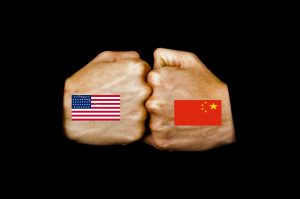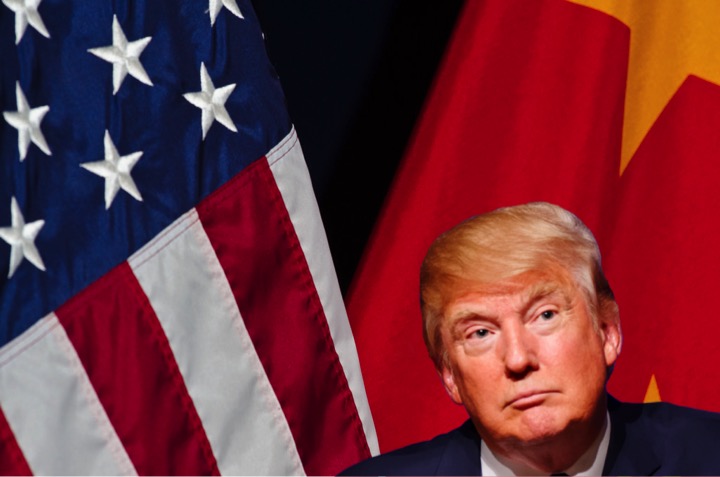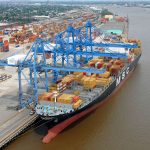New Strategy Yields US-China Trade Deal Progress
 We finally have good news on the U.S.-China trade deal front. And it isn’t just President Trump saying progress is being made in negotiations either. Through a tense year-plus of tariff hikes and trade war between the U.S. and China, President Trump has often said negotiations are going well. But this time, Beijing is saying progress is being made too.
We finally have good news on the U.S.-China trade deal front. And it isn’t just President Trump saying progress is being made in negotiations either. Through a tense year-plus of tariff hikes and trade war between the U.S. and China, President Trump has often said negotiations are going well. But this time, Beijing is saying progress is being made too.
That’s a big change from the words and tones coming out of Washington and Beijing not matching up with each other, which we’ve seen more often than not throughout this year-plus of tariff hikes and trade war.
What has changed is the strategy for the negotiations. Instead of reaching one overarching trade deal, the countries are making smaller deals in phases. This keeps difficult negotiating points from holding up all the areas the U.S. and China can reach agreement on.
Phase One of U.S.-China Trade Deal
President Trump is toting a tentative Phase One Deal that would increase intellectual property protections, which should make U.S. shippers who export to China happy, and delay upcoming tariff hikes, which should make U.S. shippers who import from China happy.
Robert Delaney, Mark Magnier, Owen Churchill, and Lee Jeong-ho reported in a South China Morning Post article:
US President Donald Trump said his negotiators have reached a “substantial phase-one deal” that will delay the implementation of more US tariffs on Chinese imports after two days of high-level trade negotiations that aimed to move the two countries closer to a conclusion of a bruising bilateral trade war.
Speaking in the Oval Office, Trump touted a deal that includes intellectual property protections and purchases of US agricultural products worth as much as US$50 billion after US Treasury Secretary Steven Mnuchin and US Trade Representative Robert Lighthizer met with Chinese Vice Premier Liu He for two days in Washington.
Phase-One Deal Timeline
In another South China Morning Post article published today (October 24th, 2019), Aidan Yao gives us a timeline of when the Phase One U.S.-China Trade Deal is expected to be finalized:
Between now and mid-November, the two sides will engage in further discussions to finalise the details of an agreement to be signed by presidents Xi Jinping and Donald Trump at the upcoming summit of the Asia-Pacific Economic Cooperation forum. While no one can rule out the risk of a reversal, the chance of a genuine truce is arguably at its highest since the trade war started.
That timeline echoes President Trump’s words on when this deal is expected to be signed, as reported in that first South China Morning Post, which was published about two weeks ago:
The “phase one” deal would take three to five weeks to write and work on a second phase deal would begin as soon as the first was signed, Trump said, adding that it might be ratified by himself and Xi during the Asia-Pacific Economic Cooperation (APEC) leaders’ meeting in Chile in mid-November.
Of course, critics point out that this Phase One deal could fall apart before being signed. Certainly, Lighthizer’s words to the president in a Cabinet meeting on October 21st allow for some doubt:
… our target is to have a phase-one deal done by the time you go to Chile. And while there are still some issues we have to resolve, we’re working towards that goal.
However, while there are “some issues” to getting the deal written and ready to sign, China is echoing the Trump Administration’s positivity for a Phase One Deal being reached.
A Bloomberg article quotes China’s Vice Premier Liu He as saying:
“China and the U.S. have made substantial progress in many aspects, and laid an important foundation for a phase one agreement.”
According to President Trump, unlike the United States-Mexico-Canada Agreement (USMCA), when the trade deal with China is done between the U.S. and China, it can immediately be signed and enacted instead of being delayed or possibly blocked by Congress.
That means we could actually see a deal between the U.S. and China in the upcoming weeks. However, we’ll still be a long way from finished with this long, hard negotiation period.
How Many Trade Deal Phases Will There Be?
The strategy for breaking down the trade deal between China and the U.S. into multiple smaller deals leads naturally to the question of how many of these deals will there be.
The Trump Administration has mentioned three stages, but potentially, there could be as many stages as it takes to come to agreement on all the issues fueling the trade war, supposing such agreements can be reached.
The Phase One China Trade Deal is already being criticized. Critics call the issues agreed upon in it as “low hanging fruit,” dubbing this a “temporary truce” in the trade war.

However, any actual deal between the U.S. and China regarding trade is a big step in the right direction. Both intellectual property and the trade deficit, Trump’s biggest cited issues at the start of this trade war, are at least partially addressed.
Of course, one would definitely think phases two and three will be more difficult to negotiate than the first phase. Well, maybe not everyone. President Trump stated negotiations will be easier after the first phase of trade negotiations, at least in regards to phase two, in the Cabinet meeting brought up above:
… things in phase two are easier than phase one, but it’s so big. Like, as an example, on the agricultural products, it’s so big that we thought doing phases would be good. But actually, the things in the second phase are, in many ways, a lot easier than the things in the first phase. So we’ll see how that goes.
Maybe that statement about ease is true or maybe it’s just the president’s hyperbolic form of speech. I suppose if you consider all of the trade negotiations to this point as lead up to the Phase One Deal then the Phase Two Deal would almost have to be easier.
Likely, the absolute hardest issues are being saved for Phase Three (or possibly beyond). Let’s just hope this new strategy takes trade deal negotiations all the way to the finish line on however many phases are needed.




